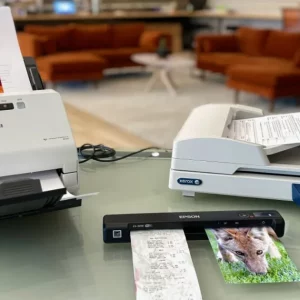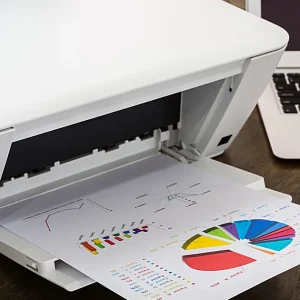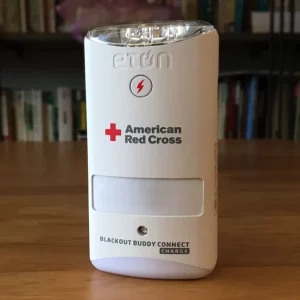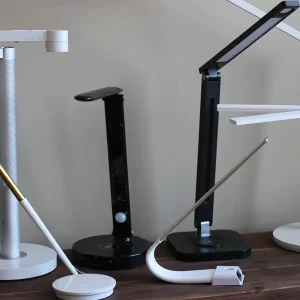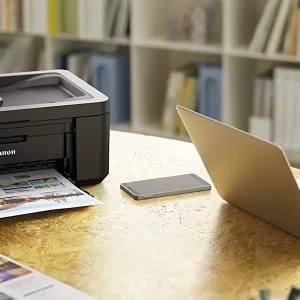“What is a sublimation printer” is the regular question for office supplies. A sublimation printer is a type of printer that uses heat to transfer dye onto a medium such as paper, plastic, or fabric. The medium is first coated with a polymer that is sensitive to heat. When the printer’s print head comes in contact with the medium, the dye is vaporized and bonded to the medium.
What Exactly Is Sublimation?
Sublimation is when a material is transformed from a solid to a gas without any intermediate states. Only at specified temperatures and pressures does it exist in the liquid form.
In general, it’s a phrase used to indicate a physical shift in the state, such as from solid to gas.
What Is Sublimation Shirt Printing?
First, the picture must be printed on a particular sheet of paper and then transferred to another material using the sublimation printing technique (usually polyester or a polyester mix).
Heat is used to remove the ink off the cloth until it is vaporized.
Sublimation shirt printing is more expensive than other procedures, but it lasts longer and does not break or peel over time.
The Sublimation Printing Process

Is it possible to explain how sublimation works? On the other hand, sublimation printing employs heat to fuse the ink into the cloth.
To begin, a design is printed onto specialized paper. The inks are heated until they convert into gas to print on fabric, which combines and permanently adheres to the material. The ink is incorporated into the fabric or substrate rather than a surface print, making the results more durable and less susceptible to fading.
You’re not far off if you’ve ever thought of getting a tattoo for your favorite product. It melts and solidifies when the ink is heated and pressed into the fabric’s pores.
The result is a long-lasting, full-color picture that won’t crack, peel, or wash off the substrate. There is a similarity between dry ice and this method in that the ink may transition from a solid to a gaseous state without becoming liquid. Pressure and heat are used to begin and regulate the process.
Smaller orders and designs that depend on the finer details are finding favor with this cost-effective and time-saving digital print approach. Because you may pick a design that goes from seam to seam using sublimation printing, it’s also known as ‘all over printing.’
As well as being widely used to produce print-on-demand T-shirts, the process may also print onto a variety of other materials that have been given a specific coating to allow the inks to be sublimated.
The Pros And Cons
The Pros
When it comes to this strategy, the most exciting benefit is simply the amount of creative control you have over your designs, which is not always the case with other approaches.
If you want to go over the top, you may do so. Why not create an entire t-shirt that resembles a burger from the printing process? Or how about a cat soaring over the cosmos on a gorgeously printed backdrop?
Alternatively, you might go for a picture of a well-known skyline or environment. You’ll keep going back for more since there are so many options.
With a design that won’t crack, peel, or fade, the lifetime of the design is a bonus. Your item will never be relegated to the back of your closet, no matter how many times it is washed!
Small-batch orders, seam-to-seam patterns, and garments with various design modifications and applications are good candidates for sublimation printing.
The Cons
The drawbacks were mostly due to the materials used. Only polyester clothing is acceptable for sublimation printing (100 percent polyester or polyester blend). As a result, sublimation is not suggested for use on other fabrics, such as cotton, as the image will not be permanent.
Choosing a fabric with a lower proportion of polyester will help you get the vintage/distressed effect that is so popular right now.
There is also the possibility of white creasing. For a design to be sublimated, it must be printed onto a white background. This ensures that any sections of the garment not covered by the print will remain white. Inaccurate folding or minor quantities of moisture on the transfer paper may be to blame for this.
Which Printers Are Suitable As Sublimation Printers?

Typically, sublimation printers use dispersion dyes that are not water-soluble (i.e., dense dyes). These printers are sometimes known as “sublime” printers or sublimation printers.
Special sublimation printers are needed because of the ink’s consistency and temperature sensitivity. Only water-based inks may be used with regular inkjet printers. However, it is not advisable to switch between standard and special inks because of the risk of contaminating the print heads and tubes.
Which Materials Can Be Printed With Sublimation?
Polyester, a fabric consisting of plastic fibers, is the best transport material. Sublimation printers need a polyester content of at least 80% for optimal printing.
Using other materials such as cotton shirts, ceramic mugs, or metal plates without a polyester coating will result in a short-lived theme and the burning of natural materials like cotton.
Polyester melts as the temperature rises over 120 degrees Fahrenheit, allowing color gas to permeate the cloth via its pores. It’s best to have a white or light backdrop. The only color that can be printed on dyed polyester fabrics is black.
Designs That Work Well With Sublimation Printing
Sublimation printing shines in eccentric, dramatic, almost ludicrous patterns. This has been a huge trend in the past couple of years, seen in high-end and low-end retailers alike.
Clever, dramatic, and ludicrous all describe this tee. And sublimation printing has enabled the entire effect to occur. The t-shirt has a lively color palette and is covered with design.
The following repetitive pattern is likewise quite effective. There are no seams to conclude the t-full-coverage shirt’s design; instead, each end is used as a natural ending point to wrap up the pattern.
Photography prints are another form of design that works well with sublimation printing. Using this process, you may cover the whole surface of the garment with an image rather than simply putting it on the front of it in a rectangle shape.
When you can fill the whole tank top, why not? The tank top above utilizes the picture of the flower and a more muted backdrop (because why not?).
The t-shirt design on the right uses photography to portray a whole landscape, which is especially impressive because of the viewpoint chosen.
Sublimation is a great option when you need many distinct logos or graphics on your shirt. It is possible to pay per logo application with standard printing. However, sublimation printing allows you to print several logos at once.
Designs That Don’t Work With Sublimation Printing
Sublimation printing may not work effectively with block color patterns or need precise placement. Direct to garment printing (DTG) may be more suitable for designs that include slogans. DTG printing is much the same as printing on t-shirts using a regular printer. As a result, a flatbed printer is used to apply the designs to the garment.
There are times when sublimation may not be the best option since it’s more costly to ‘print all over’ than to put just one logo in the middle of a piece of clothing.
One of the most important aspects of sublimation printing is recognizing the limits of the process and choosing a design carefully. After going through the advantages and disadvantages and considering the examples provided, you should be able to determine if the design you have in mind would be better suited to DTG printing or not.
Some relevant posts:
- How Much Is A 3D Printer? Top Full Answer Here! [2022]
- How To Find WPS Pin For Printer? Top Full Guide 2022
FAQ
What is a sublimation printer good for?
A carrier material is used in the sublimation printing process to transfer patterns to various materials, such as T-shirts and ceramic mugs. There are special equipment and inks that need to be employed.
Is Cricut a sublimation printer?
This means you’ll be able to cut out all of your favorite designs with a Cricut and then have the whole project done in less time than possible, all from your own home.
Is sublimation better than vinyl?
Sublimation printing has a larger initial investment than heat transfer vinyl, but it may be a better choice in the long run. You’ll need a sublimation printer, sublimation paper, a heat press machine, and blank clothing to get started with sublimation printing.
Conclusion
Sublimation printers offer many benefits over traditional printers, including higher print quality, lower operating costs, and increased versatility. In addition, sublimation printers are relatively easy to use and require little maintenance.
